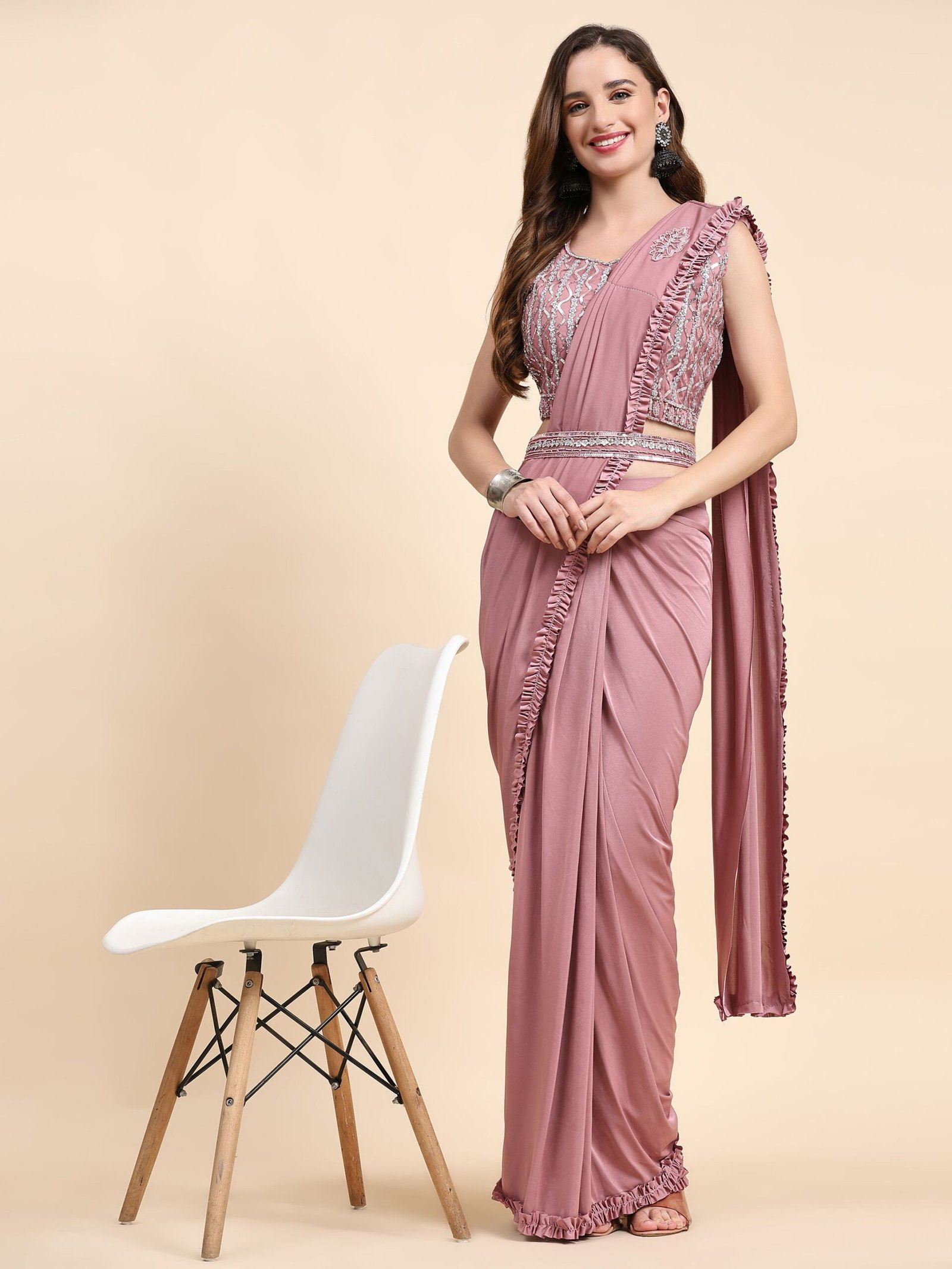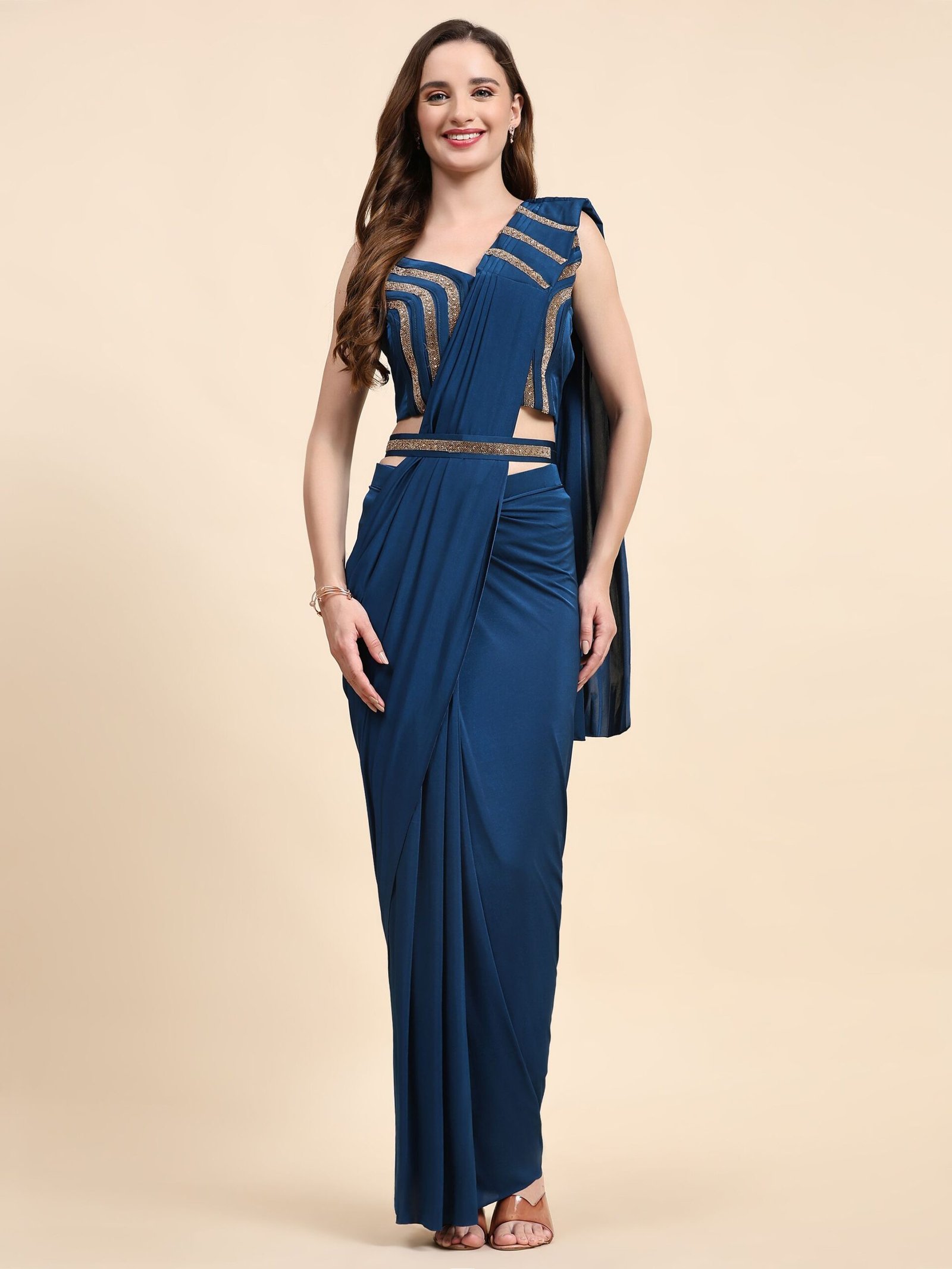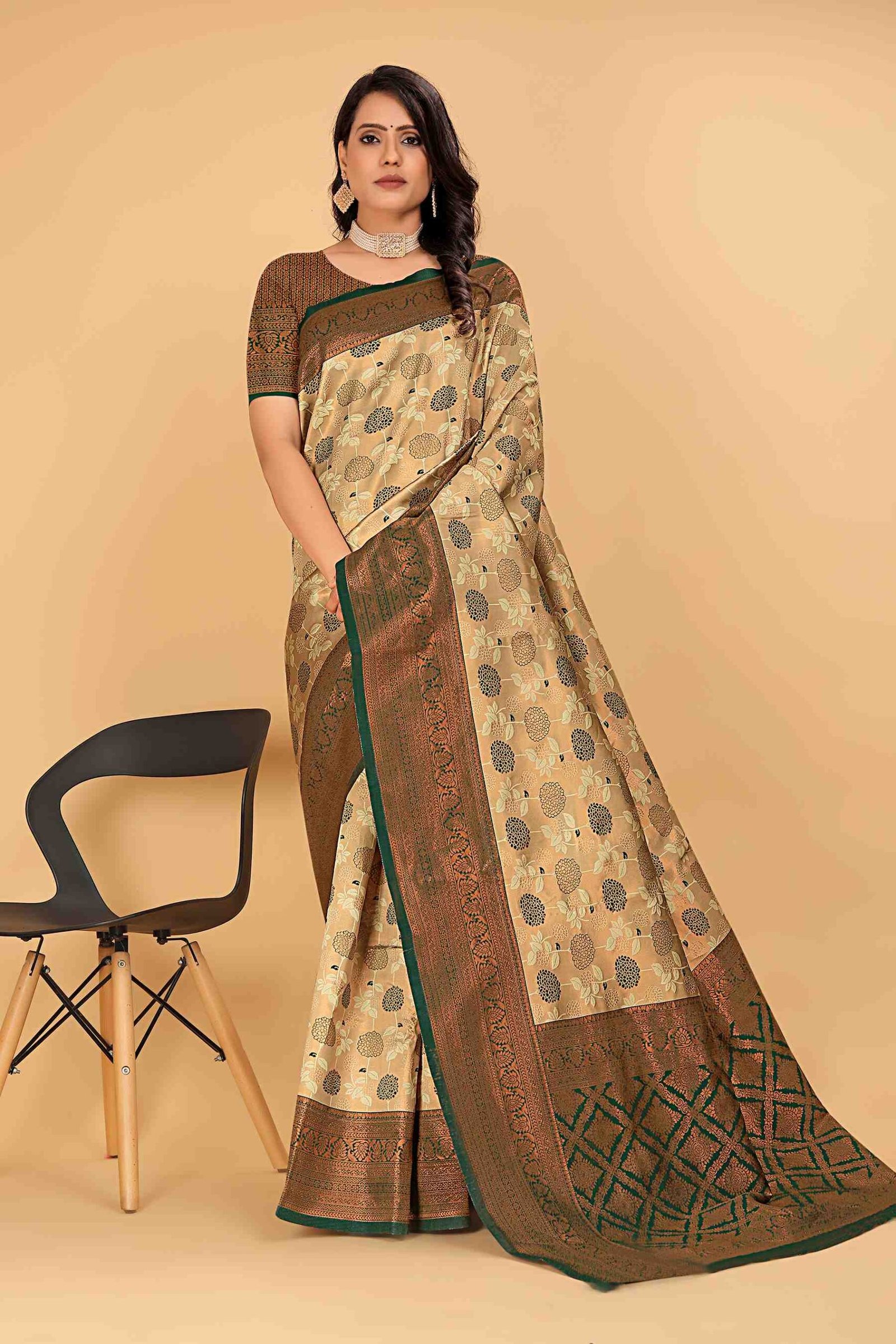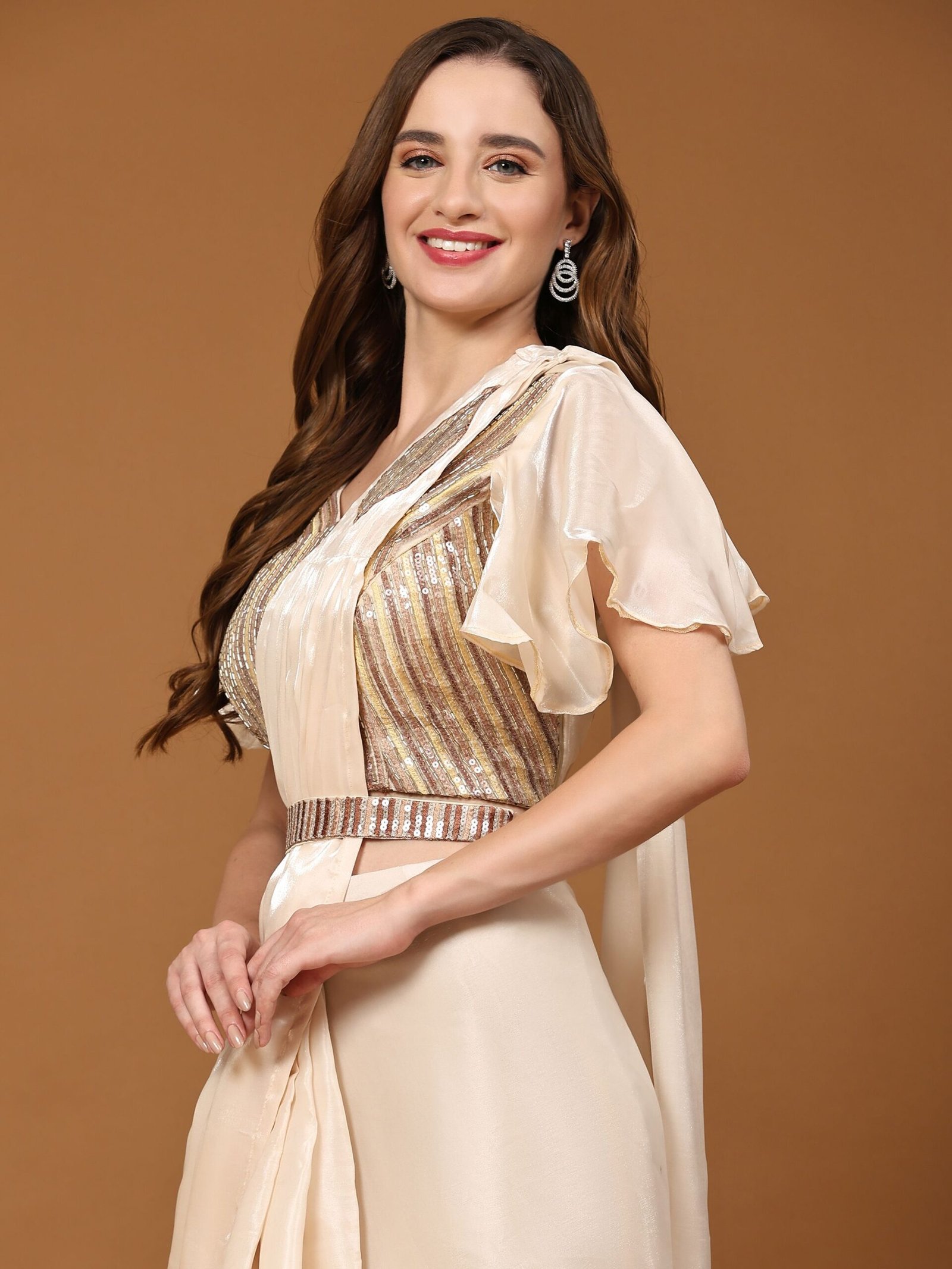What Is Sari
Sari is a long piece of fabric, typically ranging from 4 to 9 meters in length and around 1 meter in width, which is draped elegantly around the body.
The saree is usually worn with a petticoat (underskirt) and a blouse. The style of draping can vary based on regional and personal preferences, but the most common method involves wrapping the saree for women around the waist, with one end pleated and tucked into the petticoat, while the other end is draped over the shoulder, revealing the midriff.
Sarees come in a wide variety of fabrics, colors, patterns, and designs, ranging from simple cotton sarees for everyday wear to elaborately embroidered silk sarees for special occasions like weddings and festivals. They are considered a symbol of grace and elegance in South Asian culture and are often associated with traditional femininity and cultural heritage.
There are numerous types of sarees, each originating from different regions of India and neighboring countries, with unique styles, fabrics, designs, and draping techniques. :
Types of Sari:


Banarasi Saree: Originating from Varanasi (Benaras), Uttar Pradesh, Banarasi sarees are known for their rich silk fabric, intricate zari (metallic thread) work, and elaborate designs inspired by Mughal motifs.
Kanjeevaram Saree: Hailing from Kanchipuram, Tamil Nadu, Kanjeevaram sarees are renowned for their lustrous silk fabric, vibrant colors, and contrasting borders with intricate gold or silver zari work.
Bandhani Saree: Originating from Gujarat and Rajasthan, Bandhani sarees are characterized by their tie-dye technique, where small patterns or dots are tied with thread before dyeing to create intricate designs.
Chanderi Saree: Originating from Chanderi, Madhya Pradesh, Chanderi sarees are known for their lightweight fabric made of silk or cotton blend with delicate zari or brocade work.
Paithani Saree: From Maharashtra, Paithani sarees are crafted from pure silk and adorned with intricate handwoven motifs, including peacocks, lotuses, and other traditional designs. They often feature a rich pallu (decorative end piece).
Tant Saree: Originating from West Bengal, Tant sarees are woven from fine cotton yarn and are known for their lightness, comfort, and traditional Bengali motifs like flowers, leaves, and paisleys.
Kota Doria Saree: From Kota, Rajasthan, Kota Doria sarees are made from a blend of cotton and silk yarn, known for their lightweight, translucent fabric, and distinctive square-like patterns known as ‘khat.’
Chikankari Saree: Originating from Lucknow, Uttar Pradesh, Chikankari sarees feature delicate and intricate hand-embroidered designs on fine muslin or cotton fabric, known as Chikan work.
Patola Saree: Originating from Gujarat, Patola sarees are double ikat woven silk sarees known for their vibrant colors, geometric patterns, and intricate designs, which are created by dyeing both the warp and weft threads before weaving.
Sambalpuri Saree:


From Odisha, Sambalpuri sarees are handwoven using traditional ikat technique, featuring unique designs like ikat patterns, traditional motifs like animals, flowers, and geometrical shapes.
These are just a few examples, and there are many more regional variations and styles of sarees found across India and neighboring countries, each with its own cultural significance and craftsmanship.
Sarees, like any clothing item, have both advantages and disadvantages.
Advantages of wearing a sari:
Versatility: Sarees are incredibly versatile and can be styled in various ways to suit different occasions, from casual wear to formal events.
Cultural significance: Sarees hold immense cultural significance in South Asian countries, symbolizing tradition, femininity, and elegance.
Variety: There is a wide range of saree styles, fabrics, colors, and designs available, catering to diverse tastes and preferences.
Comfort: Depending on the fabric and draping style, sarees can be comfortable to wear, especially in hot climates, as they allow for airflow around the body.
Flattering: Sarees are known for enhancing the wearer’s figure, as the drape can be adjusted to accentuate curves and conceal areas as desired.
Disadvantages of wearing a sari:
Complexity: Learning to drape a saree properly can be challenging for beginners, as it requires skill and practice to achieve the desired look.
Time-consuming: Draping a saree can be time-consuming, especially for intricate styles or when attending formal events that require meticulous attention to detail.
Mobility: Some saree styles may restrict mobility, making it difficult to move around freely, especially if the saree is heavily embellished or has a lot of pleats.
Maintenance: Certain types of sarees, such as silk or heavily embroidered ones, require special care and maintenance, including dry cleaning and proper storage to prevent damage.
Accessibility: Sarees may not be accessible or practical for certain activities or professions that require a lot of physical movement or safety considerations.
Overall, while sarees have their challenges, many people appreciate them for their beauty, elegance, and cultural significance, making them a beloved traditional garment in South Asia and beyond.
Conclusion
The sari stands as a timeless and iconic garment, deeply woven into the cultural fabric of South Asia. Its versatility, elegance, and cultural significance have made it a symbol of tradition, femininity, and grace. With a wide variety of styles, fabrics, colors, and designs, the saree offers a plethora of options for wearers to express themselves and celebrate their heritage.
While the saree requires skill and practice to drape properly, and certain styles may pose challenges in terms of mobility and maintenance, its beauty and cultural importance continue to captivate people across generations. Despite the evolving fashion landscape, the saree remains a steadfast emblem of tradition and identity, cherished by millions for its timeless appeal and ability to evoke a sense of pride and connection to one’s roots. Thus, whether worn casually or for special occasions, the saree continues to hold a special place in the hearts and wardrobes of individuals around the world, serving as a testament to the enduring legacy of South Asian craftsmanship and cultural heritage.

